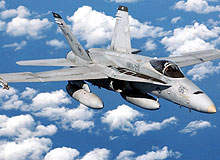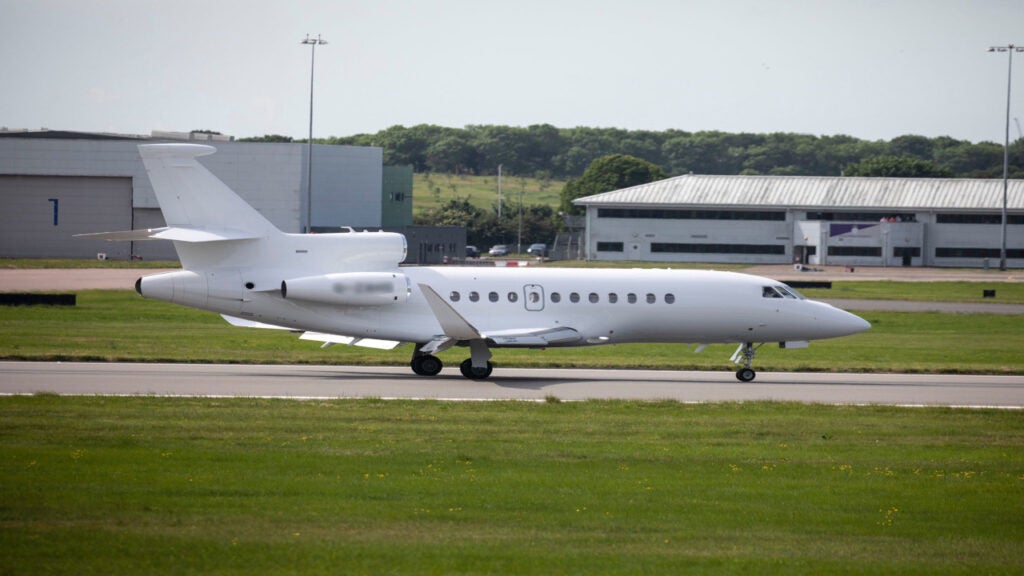
The Boeing CF-18 Hornet (military designation: CF-188) is a multi-role combat aircraft designed and manufactured by McDonnell Douglas which is currently part of Boeing Integrated and Defence System (BIDS), US. The aircraft was built for the Canadian Force and is based on its predecessor, the F/A 18 Hornet.
The aircraft can be utilised for air defence, air superiority, tactical support, training, aerobatic examination and aerospace testing and evaluation.
The Canadian Forces initially acquired 128 CF-18 Hornets of which 25 were lost in accidents and 43 were sold to an undisclosed customer. The fleet is expected to be retired from service between 2017 and 2020.
The US Navy awarded an $8m contract to Precision Air Systems of Ultra Electronics in February 2010 to supply High Pressure Pure Air Generators (HiPPAG) under Foreign Military Sale (FMS), for deploying in the Canadian CF-18 aircraft. HiPPAG is a rough and small compressor system.
The Canadian Forces awarded a $273m contract to Harris Corporation in October 2010 to repair, overhaul and modernise CF-18 Hornet’s avionics system as part of the Avionics Optimised Weapon System Support (OWSS) programme. The contract will last for six years with an option to extend for another three years.
CF-18A and CF18B variants
Boeing CF-18 Hornet is available in two variants namely CF-18A and CF-18B. CF-18A is a single seat combat and ground attack aircraft. Its military designation is CF-188A.
CF-18B is fitted with two seats in the cockpit for pilot and co-pilot. Its military designation is CF-188B.
CF-18 Hornet programme and development
In an effort to replace its F-104 Star Fighter aircraft the Canadian Government launched the Fighter Aircraft Competition (FAC) in 1977, disclosing a purchase budget of around C$2.4bn for the competition winner.
F/A-18 Hornet won the competition in 1980. The maiden flight of the aircraft took place in November 1978. The deliveries to Canadian Forces began in 1982. The aircraft entered service in January 1983.
The Department of National Defence (DND) initiated Incremental Modernisation Project (IMP) in 2001 to modernise the CF-18 Hornet Fighter aircraft. The modernisation contract was awarded to Boeing and L-3 Communications in 2002. About 62 CF-18As and 18 CF-18Bs were upgraded as part of the IMP project, in two phases.
Phase I was completed in August 2006 and had cost $436m. It included replacing the AN/APG-65 radar in the aircraft with AN/APG-73. The aircraft was fitted with a terrain avoidance system (TAS), identification friend or foe (IFF) transponder and a modern AN/ARC-210 RT-1556/ARC VHF/UHF radio for line of sight communications.
Other works in Phase I included replacement of the existing mission computer and stores management with General Dynamics AN/AYK-14 XN-8 mission computer and Smiths Aerospace AN/AYQ-9 Stores Management System respectively.
Phase II was completed in March 2010 and had cost $150m. It included integration of a Link 16 data net system, a joint helmet mounted cueing system (JHMCS), a crash survivable flight data recorder (CSFDR) and a flare dispensing electronic warfare suite into the aircraft. The JHMCS facilitates the pilot to designate targets around the aircraft.
Features
The CF-18 Hornet features a high-powered night identification light fitted in the gun loading door. A dummy canopy under the aircraft’s fuselage confuses the enemy while executing air-to-air combat missions.
The aircraft is equipped with an infra-red sensor pod, colour LCD displays, a night vision imaging system, a combat training system, an air combat guiding instrumentation system, and rough landing gear.
Armaments
The CF-18 features nine hardpoints of which one is located under fuselage, four on wing stations, two on the sides of the fuselage and two on the wingtips. The fighter craft can carry 6,215kg of payload including rockets, bombs, fuel tanks and gun pods.
The aircraft is fitted with a 20mm M61A1 Vulcan internal gatling gun (578 rounds) which can fire 4,000 to 6,000 munitions per minute.
It is capable of being equipped with a wide variety of bombs such as Paveway, Mk 82, Mk 83, Mk 84, GBU-10, -12, -16 and -24 laser guided bombs.
The aircraft is also furnished with AIM-9 Sidewinders, AIM-120 AMRAAM and AIM-7 Sparrow air-to-air missiles. The air-to-ground missile installed in the hornet encompasses AGM-65 Maverick and CRV7 rockets.
Engines
The supersonic fighter aircraft is powered by two General Electric F404-GE-400 turbofan engines. Each engine can produce 71.2kN of thrust.
The length and diameter of the engine are 3.9m and 0.88m respectively. The dry weight is 995kg.
Performance
The Boeing CF-18 can climb at a rate of 254m/s. The maximum speed of the aircraft is 1,814km/h. The combat radius and ferry range are 537km and 3,330km respectively. The service ceiling is 15,000m.
The aircraft weighs 10,455kg and its maximum take-off weight is 23,400kg.




